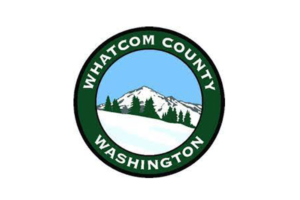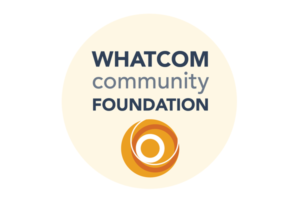When we discuss using food to prevent, treat, or manage health conditions, two phrases dominate the conversation: “food is medicine” and “food as medicine.” While they might seem interchangeable, their subtle differences carry implications for how we design programs, secure funding, and engage communities in building healthier food systems.
At New Venture Advisors, we work with farmers, food hubs, community organizations, and municipalities across the country who are increasingly seeking or being asked to participate in these types of initiatives. Defining these terms and understanding their distinctions isn’t just an academic exercise—it may affect partnership opportunities, program design, and long-term program sustainability.
The Language Landscape: Who’s Using What
The terminology varies significantly across sectors, reflecting different priorities and approaches. While a general preference for “food is medicine” seems to have grown in recent years, there is still a case and precedent for using “food as medicine” by some stakeholder groups.
The majority of health insurers, health systems, and public and private funders active in this space appear to use the phrase “food is medicine” when describing evidence-based, clinically integrated nutrition interventions eligible for healthcare funding or reimbursement. Below are examples of the terminology and definitions from a sampling of key stakeholders.
| Organization/Initiative | “Food is Medicine” Definition/Scope |
| American Heart Association, Health Care by Food initiative | The provision of healthy food to prevent, manage, or treat specific conditions or nutrition and food insecurity in a way that is integrated within the health care sector |
| U.S. Department of Health & Human Services | Interventions having a “nexus to the health care system” by providing food that can help to manage, treat, and prevent chronic conditions |
| Kaiser Permanente Food Is Medicine Center of Excellence | Targeted interventions such as medically tailored meals, produce prescriptions, culinary medicine, nutrition counseling, and programs that help people access and afford healthy food to effectively treat a range of diet-driven diseases |
| Tufts Food Is Medicine Institute | Interventions that reflect the critical link between nutrition and health, integrated into health care delivery as part of a patient’s treatment plan |
| The Rockefeller Foundation | Evidence-based programs that provide high-need patients with nutrition support, integrated into our healthcare system |
| Aspen Institute | Spectrum of programs and services that respond to the critical link between nutrition and health, including the provision of food that supports health, such as medically tailored meals or groceries, or food assistance, such as vouchers for produce, and a nexus to the health care system |
Conversely, “food as medicine” tends to be favored among nutrition professional groups, public health organizations, and in research settings where a broader, more holistic approach to food and health is emphasized. Examples from key stakeholders include:
| Organization/Initiative | “Food as Medicine” Definition/Scope |
| Academy of Nutrition and Dietetics Foundation | A philosophy where food and nutrition aid individuals through interventions that support health and wellness |
| American Society for Nutrition | Sits at the crossroads of nutrition and healthcare…may take many forms, including medically tailored meals, medically tailored groceries, and produce prescription programs |
| Elevance Health Foundation | The strategies and interventions that work as part of healthcare to improve access to nutritious food to prevent, manage, and even treat disease |
| Feeding America Food As Medicine 3.0 | Holistic approach that recognizes food’s role in preventing disease, promoting wellness, and treating illness through community-based interventions |
This terminology divide reflects fundamentally different approaches: healthcare systems often emphasize clinical integration and structured interventions adapted to local settings, while nutrition professionals and public health organizations favor broader, more holistic frameworks that may encompass more community-based and preventive approaches.
The Case for “Food Is Medicine”: Clinical Integration
Proponents of the narrower “food is medicine” framing argue that precision in language drives precision in programming. An article by members of the American Heart Association team in the recent “Food, Nutrition, and Health” theme issue of Health Affairs, titled “What Is ‘Food Is Medicine,’ Really? Policy Considerations On The Road To Health Care Coverage,” makes a compelling case that clear clinical definitions are essential for several reasons:
Healthcare Integration: When food interventions are positioned as medicine, they can more easily integrate into existing healthcare delivery systems. This means doctors can prescribe produce, insurance plans can reimburse medically tailored meals, and health outcomes can be measured using established clinical metrics.
Evidence Standards: Using food in medicine requires rigorous testing and standards, similar to those for pharmaceuticals, to identify effective interventions – including dosage, duration, and target populations – and their applications. This empowers healthcare providers and payers, who aim to deliver evidence-based medicine that effectively utilizes healthcare dollars, to draw on a robust research base and implement clinically proven models.
Aligned Priorities and Funding Models: Establishing the cost-effectiveness of food is medicine programs unlocks aligned funding sources, including reimbursement from payers like Medicare, Medicaid, and private insurance. Another article in the Health Affairs “Food, Nutrition, and Health” issue found that medically tailored meals could reduce healthcare spending by hundreds to thousands of dollars per patient per year. While many initiatives are still in early stages, the growing evidence base and creation of initiatives like the National Food Is Medicine Network of Excellence signal a growing institutional commitment to integrating food in healthcare.
The clinical model presents significant opportunities for innovative collaborations to advance community health. For example, health systems and hospitals might partner with farmers markets to fulfill produce prescription programs, while public and private insurers might work with food hubs and food banks to offer medically tailored meal services as reimbursable benefits.
The Case for “Food As Medicine”: Systems and Equity
While many recognize the promise that “food is medicine” framing holds, some stakeholders are concerned that clinical framing may be too narrow. A broader “food as medicine” scope might offer some advantages:
Signaling a More Holistic Approach: Dietitians, nutritionists, and public health professionals often prefer “food as medicine” in educational materials and community engagement, reflecting the range of ways that food can affect health. The Academy of Nutrition and Dietetics Foundation’s definition emphasizes “a philosophy where food and nutrition aids individuals through interventions that support health and wellness,” suggesting food as medicine could encompass a wider range of interventions than what might be provided in clinical settings.
Considering Health Equity and Access: Current models rely on health insurance coverage and existing farmers market or meal delivery infrastructure, which may not reach the people most in need. Requiring medical system interaction to access interventions can create barriers for those with reason to believe they will not receive high-quality, respectful care due to factors like immigration status, while farmers markets may not be accessible or welcoming spaces for all people. The FED Collective, a group of Black, Indigenous, and people of color (BIPOC)-centered organizations highlighted in the “Equity and Justice in Food As Medicine” article in the Health Affairs theme issue, emphasizes the importance of equity-centered approaches that meet communities where they are.
Addressing Root Causes with Community Ownership: This framing might also create more flexibility for structural changes and upstream interventions—such as increasing healthy food access points, improving soil health, and supporting local producers—that influence health outcomes but don’t fit neatly into clinical categories or quickly generate measurable changes in health. And “food as medicine” might do more to position communities to define their own health priorities and solutions, rather than simply adapting clinical models to their local context.
Regulatory and Partnership Implications
The choice of terminology also has regulatory implications. The phrase “food is medicine” may imply FDA oversight, clinical trial requirements, and medical liability considerations. This can be both a barrier and an opportunity, adding regulatory burden but potentially opening pathways for research innovations, broader implementation, and healthcare reimbursements.
For farmers and food businesses, the clinical framing may require new food safety protocols, nutrient documentation, quality standards, and data privacy policies and practices. Food hubs might need to expand cold chain capabilities for medically tailored meals. These requirements can be costly but also create market differentiation and enhance competitiveness. Recent research indicates that ten states have already authorized Medicaid managed care plans to cover nutrition interventions through “in lieu of services” authority, creating new market opportunities for food businesses.
Healthcare partnerships may also be impacted by language choices. Hospital systems and insurance companies are more likely to engage with “food is medicine” initiatives that fit clinical frameworks. Public health departments and community organizations may be more receptive to “food as medicine” approaches that address social determinants of health and aim to reach broader populations, including people who have not been diagnosed with a diet-related disease.
Beyond the Binary: Additional Terms & Considerations
The naming of the April 2025 Health Affairs theme issue, “Food, Nutrition, and Health,” points towards another option: more expansive language. The issue’s opening editorial discusses the “interrelationships among income, food security, nutrition security, diet quality, and health,” which is reflected in the names and objectives of some academic research centers. The centers described in the table below represent a step beyond the medicine-centered framing and the adoption of a broader “food and health” terminology, which may offer the most inclusive approach for stakeholders in local food systems.
| Academic Center | Approach |
| UC Davis Innovation Institute for Food and Health | Multi-omics approach connecting food production to human health outcomes through industry partnerships |
| University of Nebraska Food for Health Center | Microbiome research linking agriculture, plant breeding, and human wellness |
| University of Kentucky Food as Health Alliance | Clinical and community research spanning agriculture, food, and health sectors |
| NC State Plants for Human Health Institute | Discovery and translation of plant innovations for disease prevention |
Indigenous communities may use the term “food sovereignty” in addition to or in place of “food as medicine” or “food is medicine.” This terminology emphasizes the right of Indigenous peoples to define, control, and restore their food systems, which are rooted in traditional knowledge, cultural practices, and relationships with land, plants, and animals.
This approach offers valuable insights for local food systems stakeholders working in diverse communities, demonstrating how food and health initiatives can center community ownership, cultural practices, and holistic well-being.
Recommendations for Local Food Systems Stakeholders
Rather than choosing sides in terminology debates, successful programs may use multiple framings with nuance and intention. Here are five key takeaways from our experience:
- Know Your Audience: Use “food is medicine” with healthcare payers and systems for clinical partnerships and reimbursement. Use “food as medicine” with nutrition professionals and community organizations addressing food system issues. Use “food and health” with diverse coalitions across sectors.
- Center Community Voices: Keep community priorities and values central, especially when working across multiple cultures and sectors. Consider how local context might affect program design, delivery, and communication. For example, the “food and health” framing may help avoid medical system-first implications and facilitate the development of innovative, systems-minded solutions.
- Define & Measure Impact: In addition to clinically measured and self-reported health outcomes, track broader benefits like environmental impacts, animal welfare, and economic resilience. Many organizations are also developing community-centered metrics, including trust, social cohesion, and cultural relevance. This can help to communicate the wide range of program impacts and open more funding streams and partnership opportunities.
- Consider Quality Standards: Use evidence-based guidelines like the Food is Medicine Coalition’s accreditation standards, while recognizing that community-led contexts may define quality differently and emphasizing cultural relevance.
- Build Bridges: Connect your work to clinical outcomes, community health, cultural preservation, and economic development. Learn from BIPOC-led initiatives by centering community ownership and respecting traditional knowledge systems.
Increased attention on the intersection of food and health offers unprecedented opportunities for local systems to contribute to community wellbeing. Regardless of terminology, the essential work remains the same: creating equitable systems that help connect people to nourishing food that supports better health.
New Venture Advisors works with food systems organizations across the country to develop sustainable programs that connect food, health, and community. Learn more about our work.
Photo: simon2579 via Photostock



